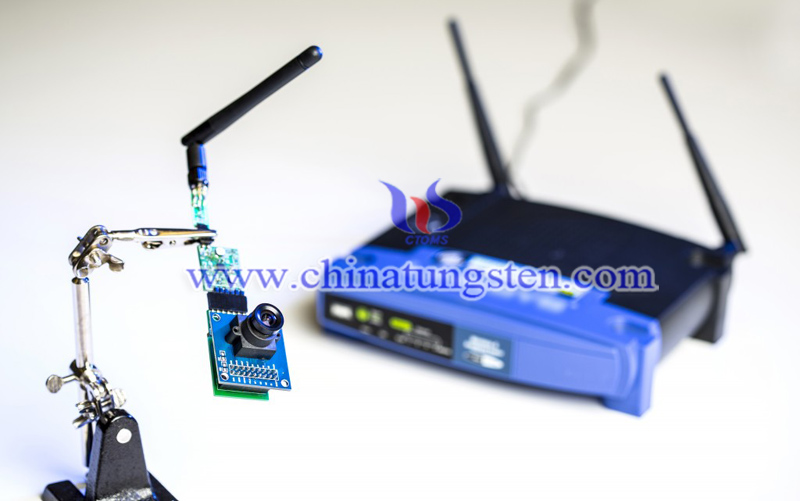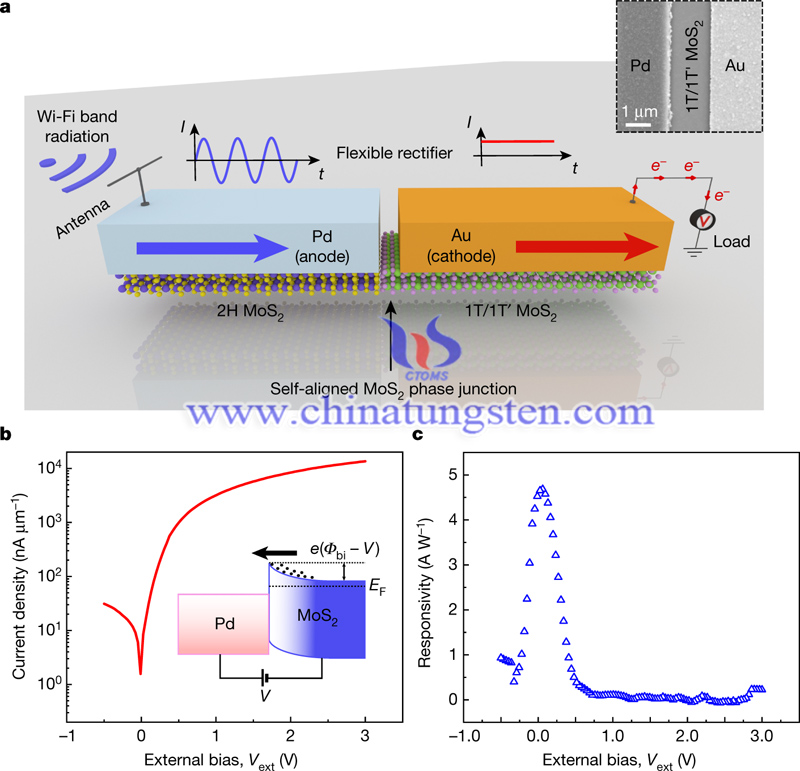MoS2 Enabled Rectenna Converts Wi-Fi Signals into Electricity
- Details
- Category: Tungsten's News
- Published on Monday, 30 December 2019 20:30
Two-dimensional Molybdenum disulfide (MoS2) enabled flexible rectenna converts Wi-Fi signals into useful DC power, it is expected to realize wireless fidelity power generation. Nowadays, wireless fidelity is everywhere. Asides from surfing the Internet, relevant foreign scientists have invented a device that can convert its signals into electricity to open a way for the widespread application of wireless energy transmission.

In fact, the principle of achieving Wi-Fi power generation is not complicated: electromagnetic waves carrying wireless fidelity can be "captured" by a device called a "rectenna", and the AC and DC conversion can be achieved by connecting a rectifier, which could power electronic circuits or charge batteries.
The ubiquitous Wi-Fi signal has inspired scientists. In the past, there have been related researchers in this field to tackle key problems. The bottleneck that could be difficult to break through is the conversion between AC and DC. Wi-Fi power generation not only solved the problem but also overcome the disadvantages of the thick and inflexible traditional rectifiers. This is mainly due to a semiconductor that converts signals into useful DC power - MoS2.
Molybdenum disulfide is an inorganic compound composed of molybdenum and sulfur. It is widely used as a dry lubricant because of its low friction and robustness. It is an ultra-thin and extensible material, which can be called one of the thinnest semiconductors in the world, and it also owns the advantages of rich reserves, low price, easy fabrication, non-toxicity, etc., and is recognized as a promising semiconductor. Although the electron migration rate of molybdenum disulfide is lower than crystalline silicon, it is better than amorphous silicon and other ultra-thin semiconductors.

While there are also shortcomings in this technology. In the test, although the power generated was enough to light up the display of the mobile phone, the energy conversion rate was not very high. If power is supplied to high-power equipment, it is also necessary to improve efficiency and reduce energy loss during transmission. From this point of view, there is still a long way to go to achieve mass production.
The invention of MoS2 enabled rectenna to convert Wi-Fi signals into DC power is a big step on future power supply methods. In the future battlefield, the reliance on information electronic equipment will be larger. If the radio frequency signals to transmit energy and could be accurate, combat effectiveness will be significantly improved.
| Molybdenum Supplier: Chinatungsten Online www.molybdenum.com.cn | Tel.: 86 592 5129696; Fax: 86 592 5129797;Email:sales@chinatungsten.com |
| Tungsten News & Prices, 3G Version: http://3g.chinatungsten.com | Molybdenum News & Molybdenum Price: http://news.molybdenum.com.cn |



 sales@chinatungsten.com
sales@chinatungsten.com